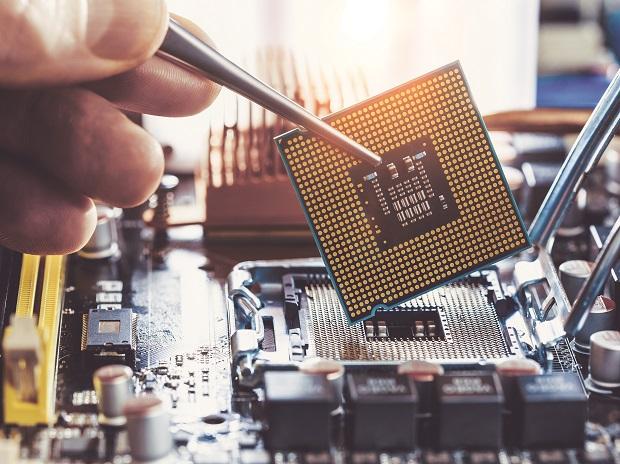Will India Succeed in Emerging as the Next Semiconductor Hub?

India is making efforts to establish itself as a center for the production of semiconductor, but there is still more to be done. According to experts, it will have to make an effort to catch up with nations that have a strong market position.
The South Asian nation’s ambitions took a significant step ahead this month with the news that the Indian mining corporation Vedanta and Taiwan’s Foxconn will build one of the nation’s first semiconductor manufacturing facilities in the state of Gujarat. The complex will receive investments from the two corporations totaling $19 billion, or 1.54 trillion rupees.

The Indian government has been trying for a while to attract investment in this field, according to Subhabrata Sengupta, executive director of strategy and management consulting firm Avalon Consulting. Execution and if this will encourage the establishment of [an] ecosystem like Taiwan are the current issues. He stated that challenges include India’s recent entry into the market and the significant capital expenditure required to establish chip manufacturing facilities.
The majority of semiconductors are produced in Taiwan. According to statistics from market research company TrendForce, its contract chip producers are expected to have 66% of the worldwide market share by revenue this year, an increase of 2 percentage points from the previous year. China and South Korea play significant roles in the global semiconductor supply chain. Processors are crucial in items like cell phones and electric vehicles.
Due to the rising demand for these products, semiconductor sales on a global scale reached $152.5 billion in the second quarter of 2022. According to the Semiconductor Industry Association, this was up 13.3% from the same time the previous year. India wants to take a piece of the expanding market, so Prime Minister Narendra Modi’s administration has stated that it wants to become a center for chip manufacturing.
India proposed a $10 billion incentive scheme for semiconductor and display producers in December of last year to further its goals. The goal is to bring in much-needed expertise, draw in international manufacturers, and create opportunities for local businesses. In addition, the Indian government views domestic chip production as crucial to its intentions to significantly expand the nation’s electronics manufacturing sector as part of its “Make in India” push.![]()
The difficulties during the COVID-19 outbreak showed the advantages of local semiconductor fabrication as demand for electronics increased despite supply chain constraints. The shortages caused production to be interrupted for auto and electronics firms in India and throughout the world. The chief executive and co-founder of the smart accessory and audio company Gizmore, Sanjay Kumar Kalirona, claimed that “industries have been suffering owing to the global scarcity of semiconductor chips.”
India is in a good position to take advantage of the current circumstances. The domestic production of semiconductors, he continued, would “assist in addressing the supply chain challenges” that India was experiencing, and the industry may also have some “cost benefits.” The market for producing semiconductors is expected to more than treble in this decade, reaching $1 trillion by 2030. According to research published by the India Electronics and Semiconductor Association earlier this year, India has the chance to take home nearly $80 billion of the market.
The country would see a fast-developing electronics manufacturing and innovation ecosystem going forward, with the Indian government’s added attention on establishing a total ecosystem for semiconductors in the country, By doing so, it not only seeks to secure its strategic place in the global value chain but also to establish itself as a major destination for manufacturers and investors. Plans for the industry are beginning to take form, aided by the government’s drive for chip manufacture.
The Karnataka state government, located in the south of the nation, said in May that it had entered into a preliminary deal to establish a semiconductor fabrication facility with the ISMC international semiconductor consortium. ISMC is a partnership between Abu Dhabi’s Next Orbit Ventures and Israel’s Tower Semiconductor, which was bought up by US chip giant Intel. The group would invest $3 billion in the project, according to the state government.
A 300-acre “semiconductor high-tech park” is being developed by Singapore-based IGSS Ventures in Tamil Nadu, India, according to a statement made in July of last year. India was then referred to as “a late starter” by IGSS group CEO Raj Kumar. He added that he was certain that this strategic approach would help India reclaim its rightful position as a viable alternative for semiconductor manufacturing.
However, Vedanta and Foxconn’s ambitions to build a semiconductor and display facility in Gujarat have received the most attention yet. Anil Agarwal, the CEO of Vedanta, wrote on Twitter that “India’s own Silicon Valley is a step closer now.” He tweeted, “India will meet the digital requirements of not just its citizens, but also those from beyond the seas.” The transition from chip-taking to chip-making has officially begun. “
The neighboring state of Maharashtra, whose headquarters is Mumbai, has also been vying for the chance in the field, which offers a variety of financial advantages. The businesses anticipate creating about 100,000 jobs at the new factory, which they want to open in 2024. When the agreement was announced, Gujarat’s chief minister, Bhupendrabhai Patel, stated, “We are resolved to make our nation more self-sufficient in technology and minimize our dependency on imports from other countries.”
We anticipate that the center will usher in a prosperous future and eventually entice investment from other big corporations. “The expanding infrastructure and the government’s active and strong backing raise confidence in building up a semiconductor facility,” said Brian Ho, vice president of Foxconn Semiconductor Group. It is still extremely early, though. Given its relative inexperience in the field, India still has a lot of obstacles to clear before it can play a significant role in the chip-making supply chain.
Too far, the majority of India’s semiconductor production has been focused on the nation’s state-run defense and space industries. For the Indian semiconductor sector to succeed, Saket Gaurav, chairman and managing director of Elista, an electronics, home appliance, and IT company in India, stressed the need for government and business collaboration. However, he is optimistic that India will eventually become one of the world’s top chip producers.
There is a “lack of ecology and expertise” because the commercial business in the nation is still in its very early phases, according to Mr. Sengupta. He noted that there is “an opportunity to draw that talent back” because India “has a vast pool of engineers working in the semiconductor business around the world.” Other factors to consider, according to insiders in the sector, are the availability of raw materials and water supply.
India’s aspirations to establish itself as a global center for semiconductors coincide with US and EU initiatives to expand its chip manufacturing sectors. However, analysts assert that further holes need to be filled. Under the previous Donald Trump administration, the US began denying China access to American technology, including machinery for producing chips. According to a Reuters story, the Biden administration intends to extend restrictions on US exports of chip-making equipment and semiconductors used in artificial intelligence to China.
According to Mr. Kalirona, India could be able to lessen the world’s reliance on China through agreements like [the Vedanta-Foxconn factory]. He continued by saying that the action demonstrated how the Indian government was assisting in “accurately moving the needle.” The Foxconn-Vedanta agreement, according to Mr. Kalirona, “will be one of several in the space and there will be many more to come.”
edited and proofread by nikita sharma




